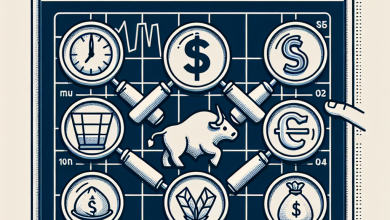
Is High Bitcoin Volatility a Feature Rather Than a Bug?
Bitcoin’s extreme price fluctuations have long raised concerns among traditional investors, many of whom see its volatility as a significant risk incompatible with portfolios aimed at capital preservation.
However, analysts from BCA Research argue that this volatility could actually be a beneficial characteristic, enhancing Bitcoin’s value within a diversified investment portfolio. Instead of perceiving volatility as a drawback, BCA suggests that Bitcoin’s high fluctuations can be an asset when examined from a broader perspective.
Historically, many investors have avoided Bitcoin due to its pronounced price swings, with the cryptocurrency displaying an average monthly volatility of 76.1%. In stark contrast, traditional assets like bonds exhibit much lower volatility, averaging around 5.4%. Bitcoin’s history includes several major downturns, with two instances where its value plummeted by more than 70%. For conservative investors, such statistics can be alarming, leading them to regard Bitcoin as too risky for serious investment consideration.
BCA Research counters that evaluating Bitcoin solely based on its volatility is misleading. What truly matters is an asset’s role within the overall portfolio and how it impacts risk and return. Ignoring the overall value that an asset can bring to a diversified investment strategy misses the larger context.
A recent paper by AQR that BCA Research cites redefines the perception of high volatility. The analysis suggests that high-volatility assets can be more capital-efficient compared to their lower-volatility peers. This is because assets like Bitcoin can generate greater returns without requiring a significant allocation from the investor’s portfolio, thereby freeing up capital for other investments and allowing for more flexible portfolio management.
To illustrate this concept, BCA Research compares Bitcoin with a hypothetical low-volatility asset called Boringcoin. Both Bitcoin and Boringcoin have identical risk-adjusted return profiles, sharing the same Sharpe ratio of 0.61, indicating equal performance on a risk-adjusted basis. However, they differ significantly in terms of volatility, with Boringcoin resembling the lower volatility of bonds at 5.4%, in contrast to Bitcoin’s higher volatility.
This difference becomes evident in portfolio constructions targeting a 10% annual volatility. With Bitcoin, only an 8% allocation is needed to achieve the desired risk-return balance. In contrast, using Boringcoin necessitates a more significant allocation, which can hinder potential returns.
BCA’s analysis further demonstrates that traditional stock-and-bond portfolios can be optimized by incorporating Bitcoin. Its high volatility allows for impressive returns with a relatively modest allocation, thereby freeing up capital for other investment avenues. In a well-structured portfolio, Bitcoin’s volatility can be utilized to maximize capital efficiency, rather than being viewed as a risk factor to avoid.
While high-volatility assets like Bitcoin can yield better returns per unit of risk, managing such assets presents challenges beyond theoretical considerations. BCA Research highlights the emotional complexities involved in investing. Managing client finances involves not just numerical analysis but also recognizing how individuals react to market fluctuations. Investors may find it difficult to endure Bitcoin’s dramatic ups and downs, especially during significant market declines.
For instance, while Bitcoin has experienced losses exceeding 70%, Boringcoin, with its smoother volatility, only saw a 7% decline during the same period. This emotional strain can make it challenging for investors to adhere to high-volatility strategies, even when they theoretically promise greater returns.
BCA draws a compelling contrast between Bitcoin and Boringcoin’s price trajectories. Boringcoin’s steadier performance would likely be more appealing to conservative investors compared to Bitcoin’s erratic behavior, which resembles a financial rollercoaster. Even though Bitcoin may provide better long-term returns, the psychological burden associated with navigating sharp declines could lead to hasty selling, undermining its potential advantages.
 GOOGL
GOOGL  META
META 


